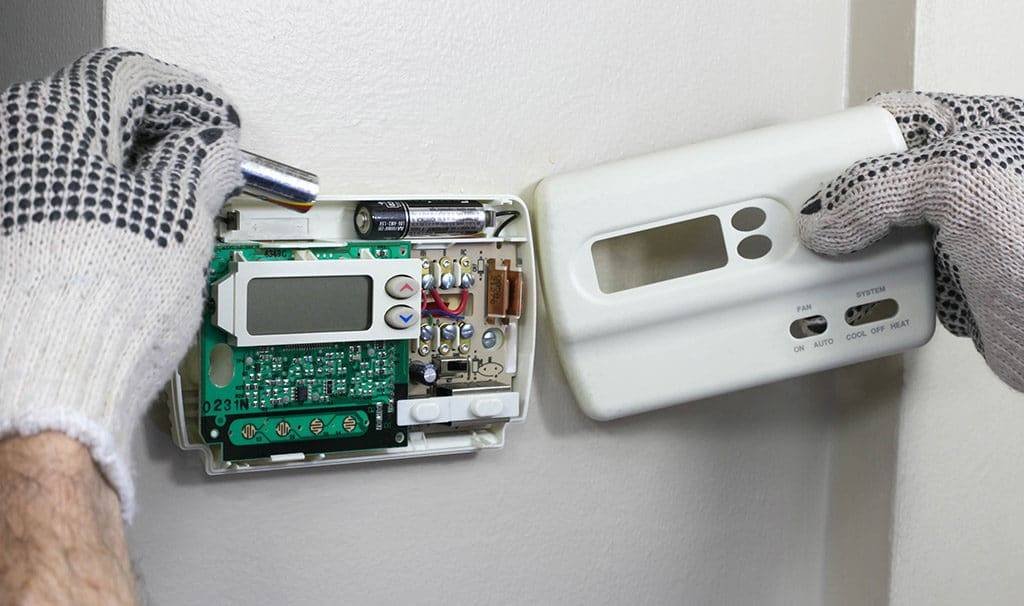Most people know that thermostats are essential for regulating the temperature in a home. It helps to keep your home comfortable all year round, but it can only do this if it’s in good working condition. Many don’t realize those thermostat problems can cause various issues with an HVAC system.
Keep your home comfortable all year round by knowing the most common thermostat problems and how to fix them.
Improper Installation
Many individuals attempt to handle problems on their own. Although there may be several advantages, working on HVAC systems without training and expertise might be challenging. Repairing HVAC systems without the help of a professional may be tricky.
If the wires are not securely fastened to your thermostat, it is evident that faulty installation is the cause of your issue. Avoid attempting to remove the thermostat on your own. It might lead to more damage and potential electrical problems in your home.
It’s conceivable that a prior owner attempted to install a new thermostat but didn’t connect it properly. Sadly, this generally destroys the thermostat. Without prior expertise, avoid fixing or replacing a thermostat.
Not Compatible With Your HVAC System
While it might be tempting to purchase a thermostat online, you should ensure that it is compatible with your current HVAC system. Not all thermostats are the same, and they won’t all work with all types of HVAC systems.
If you’re unsure which thermostat will work with your HVAC system, it’s best to consult a professional. They will be able to help you select the thermostat that will be most compatible with your current system.
If you purchase a thermostat incompatible with your HVAC system, it likely won’t work correctly. It can cause various issues, including making your system work less efficiently and your home less comfortable.
Dirty or Dusty Sensors
The sensors on your thermostat are responsible for detecting the temperature in your home. If these sensors are dirty or dusty, they may not be able to accurately detect the temperature. It can cause your thermostat to give inaccurate readings, leading to your HVAC system working harder than necessary.
You can clean the sensors on your thermostat with a soft cloth. Gently wipe away any dirt or dust that has collected on the sensors. Be careful not to damage the sensors while you’re cleaning them.
Too Old Thermostat
Like any other type of technology, thermostats have a limited lifespan. After a certain amount of time, they will simply stop working correctly. Your thermostat is more than ten years old and likely needs replacement.
If your thermostat is starting to act up and you’re not sure why it may be simply too old. In this case, the best solution is to replace the thermostat with a new one.
Thermostat Location
The location of your thermostat can have a significant impact on its accuracy. If you place your thermostat in a spot with direct sunlight, it may give inaccurate readings. The same is true if it’s near a door or window that is frequently opened and closed.
To ensure accuracy, you should place your thermostat in a spot that is away from direct sunlight and drafts. It should also be located at eye level so you can easily see the display.
Not Properly Calibrated
If your thermostat is not properly calibrated, it will give inaccurate readings. It can cause your HVAC system to work harder than necessary, leading to higher energy bills.
You can check the calibration of your thermostat with a simple test. First, set the thermostat to a specific temperature. Then, use a thermometer to check the temperature of the room. If the two readings are not the same, your thermostat is not properly calibrated and just needs adjustment.
Requires Batteries
If your thermostat requires batteries, they may cause your issue. Dead or dying batteries can cause a thermostat to give inaccurate readings or stop working altogether.
Make sure to check them regularly. If the batteries are low, replace them with new ones. If your thermostat still isn’t working correctly after replacing the batteries, there may be another issue.
Program Issues
Like everything new, advanced thermostats are programmed. While most contemporary thermostats will function flawlessly for years and years, you may not correctly configure some models.
It might be your issue if your thermostat starts to malfunction and you cannot describe what is happening. Replacement of a broken thermostat is the sole remedy. There is no mechanical way of fixing the majority of these parts.
Avoid attempting to change the thermostat on your own. Consult a qualified HVAC repair technician instead.
Conclusion
These are only a few of the thermostat problems that you might encounter. You can take the necessary steps to prevent these issues by being aware of them. You can also get ready if they do occur so that you can quickly resolve the problem and get your thermostat working correctly again.

